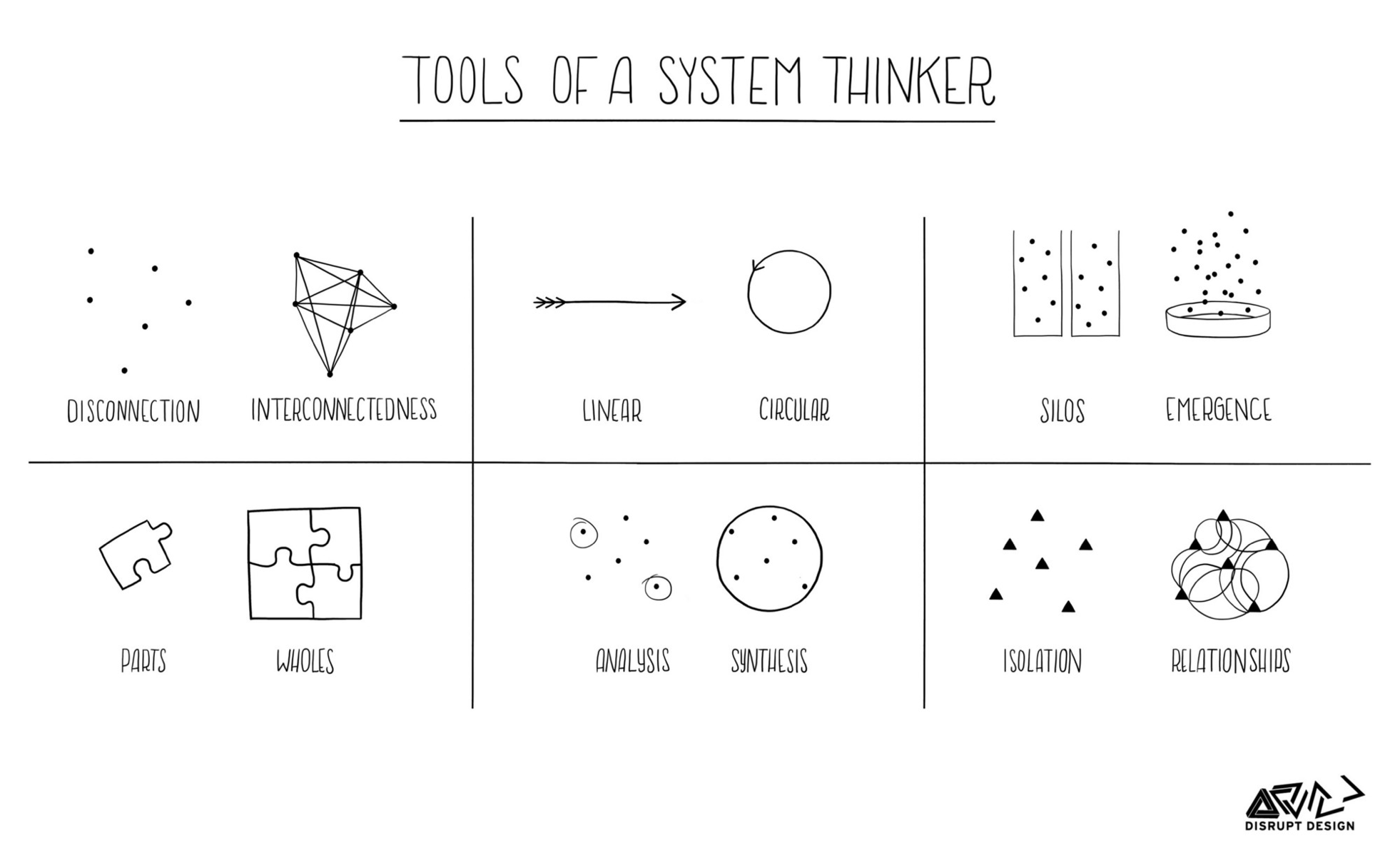At one point in my career — my intense work ethic – pushed my body to a breaking point.
I’m going to be documenting all the techniques I used to achieve full recovery in How to Become a Cognitive Athlete - but that’s another series.
For too long I worked in a system without giving much thought to its overall design and sustainability over the long haul. I was operating in a system designed by someone else — and it was Hell.
I needed a new paradigm and a whole new way of thinking.
I learned to be a Systems Thinker.
These are some of the concepts and tools from systems theory that we can leverage to bring some order to the fast paced chaos of tech life.

I highly recommend this post on Tools for Systems Thinkers by Leyla Acargolu to lay some groundwork for understanding the key concepts in systems thinking:
- Understanding how individual parts can sum up to a greater whole
- Modeling relationships and interconnectedness
- Identifying positive and negative feedback loops
- And so on
If you haven’t had much experience with these concepts, please also check out this awesome YouTube course on systems thinking from Systems Innovation.
Systems of Systems
Over this series, we’ll explore 4 systems — taken as collective whole – that are designed to manifest a Dream Team.
- System for Hiring
- System for Structuring
- System for Executing
- System for Leveling Up

All of these interoperate as a system of systems. Notice how they connect and interconnect with each other.
Your thinking can become quite layered and structured when you start to see the world through the lens of systems theory.
You’ll also start to recognize feedback loops. Take these for instance:
- A leveling up system improves the execution system which feeds back into higher leveling up.
- A team with a high performance execution system in turn attracts higher calibre talent into the hiring system.
A key feature we’ll want to build into each of these systems is antifragility. This allows each system to self-improve under pressure and adversity instead of failing catastrophically. This concept of antifragility unpacked by Nassim Taleb in Antifragile: Things That Gain From Disorder.
We’ll zoom in and explore each of these system models in great detail.
System Domains
To keep things simple, our focus here is on systems that exist within the domain of people and products, but it’s absolutely essential to consider the most important system of all - the eco-system.

What impact are your product and human systems having on the health of the planet and humanity as a whole?
Modern systems need to be thoughtfully designed for sustainability.
Sustainable systems for people, products, and the planet. If implemented, we may have enough time to extend our civilization to a multi-planetary one and avoid being a solution to the fermi paradox.
It’s far too common that a system is thought of as machine with people as “gears” that are easily replaced when they burn out. This same “sick” thinking yields products that pollute and destroy our environment.
For the ultimate master class on sustainable systems in the planet domain, you must read an Operating Manual for Spaceship Earth from the legendary systems theorist Buckminster Fuller.
I’m hopeful that your dream team will be working on breakthroughs to unlock circular economies and other regenerative systems.
NEXT> We’ll continue by defining a set of System Design Principles.
GOTO: Table of Contents
© 2019 Adam Huda - Written in California & Montana with iA Writer